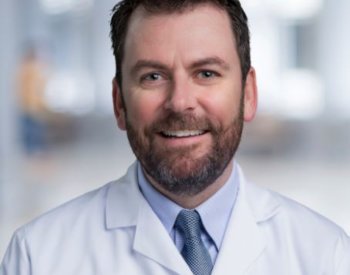From the San Antonio Business Journal

Outstanding Physician Nonhospital-based
Dr. C.J. Winckler, deputy medical director, assistant clinical professor, San Antonio Fire Department, UT Health San Antonio
Dr. C.J. Winckler is board certified in emergency medicine and emergency medical services. He is deputy medical director for the San Antonio Fire Department and is an assistant clinical professor in UT Health San Antonio’s departments of emergency health sciences and emergency medicine. Winckler provides daily clinical supervision via on-scene medical direction, online medical direction and performance improvement processes to more than 1,700 fire department providers, including more than 500 paramedics. He also oversees the medical special operations unit and the incumbent medical training officer programs at the fire department. Winckler implemented a novel clinical clearance process for law enforcement navigation of emergency detained patients directly to psychiatric facilities. He also deployed whole blood in a metropolitan city — the first time whole blood has been made available to save patients in hemorrhagic shock in an entire metropolitan population.
Who or what inspired you to pursue a career in health care and why? After four years of college course work, I concluded that I didn’t like the idea of a desk job and wanted to do something where my hands and skills would directly help people. I considered the Peace Corps, but it made more sense for me to help those in need here at home. I decided to take an [emergency medical technician] basic course. I had never worked in the medical field, and neither had any of my family. Being a medic was new and exciting, and allowed me to break free from the confines of a traditional office. I was hooked. Medicine would be my future.
What was your first job, and what lesson did you learn that is applicable to what you do today? My first job in the medical field was as an EMT basic. Transporting patients to hospitals, between hospitals and to outside hospital appointments taught me to listen. Listen to the patient; they often provide the answer. I still apply the skill of listening whether I am working in the [emergency room], working on the streets of San Antonio or in a meeting working on a systemwide project. Also, as a medic, working with a partner had taught me to trust and understand the person you will be working with for the next 24 hours. Knowing your team’s [and] partner’s strengths and weaknesses, and your own, will make you successful in accomplishing your goals together.
Tell us about a patient or a case that upon reflection explains “this is why I do what I do.” Jan. 30, 2019, was the culmination of 15 years of education, training, planning and collaboration. Tiffany Kieschnick was pinned in her vehicle, with her body and her life hanging in the balance. SAFD medical special operations paramedic Alberto Garcia was in the vehicle with Tiffany, monitoring her vital signs, while the SAFD rescuers attempted to cut the roof off the vehicle. After 10 minutes, Tiffany stopped talking and became unresponsive. The decision was made to utilize a special mechanical tool to free her from her vehicle more quickly. The crews then had to knock the back window out and rapidly extricate her. The medics started breathing for her and rushed her to the ambulance. In the back of the ambulance, she lost pulses. She was dead. She immediately received mechanical chest compression from a LUCAS device, which my colleagues Dr. Miramontes and Chief Stringfellow had worked for years to get placed on the ambulance. Not all our medical colleagues agree with this treatment modality. The crew secured an airway with rapid sequence intubation. I have trained my MSOU medics to use this treatment. Not all our medical colleagues agree with this treatment. The MSOU EMS crew on scene also had whole blood capability as of Oct. 1, 2018. Not all our medical colleagues agree with this treatment. SAFD EMS was only the third ground EMS system in the country to offer whole blood to prehospital patients and the first in the world to offer whole blood to an entire metropolitan city. Tiffany received CPR and one unit of whole blood over the next three minutes. She regained pulses. She was alive again. Since the EMS unit was over 30 minutes from the closest trauma center, a helicopter had been called to the scene and University Hospital and she received another two units of blood enroute. She then received more blood in the ER and went to the CT scanner, and it was recognized that she had a ruptured spleen. She did not go to the operating room, unheard of for a patient that had died from blunt traumatic cardiac arrest. Instead, she went to interventional radiology to have an injection to stop the bleeding in her spleen. The bleeding stopped, and she is alive today. This is the first blunt traumatic arrest patient to be saved by a ground ambulance with whole blood in the entire country. Whole blood saved Tiffany’s life. Multiple stakeholders and partners worked together tirelessly to make this possible.
What characteristics or traits must a person have or cultivate to effectively work in health care? Conviction. You must be persistent in your beliefs. You must do everything within your power to accomplish what you feel is right and just for the patient and the community. Courage. It is not always easy or comfortable to be the first to deploy a novel way to address a problem. You must trust your instincts. It often just takes someone, or a group of someones, to take a stand and do what is right. Collaboration. You must work toward your goals with multiple stakeholders. This requires patience and truly listening to the concerns of others. Collaboration ensures that when you accomplish your goal it will continue to be accomplished.

